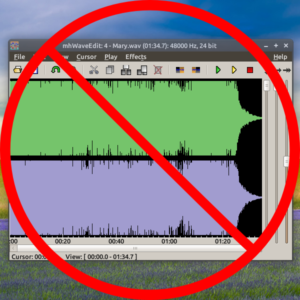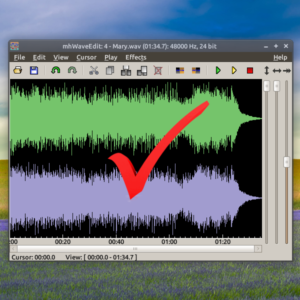What Is Mastering?
In the simplest terms, mastering is the process of taking the final mixes, whether it’s for a full length album or a single, and adjusting levels, EQ and dynamic range to create the final master for the intended medium (vinyl, CD, digital download, streaming, cassette, etc.). The goal is a release that is cohesive and translates to the real world listening experience (home stereo, radio, smart phone, car stereo, etc.).
For example, a collection of mixes may differ slightly in terms of tone (bright, dark, muddy, piercing). The mastering engineer will adjust each song so that their tonality better matches. The volume of each song can be different. The mastering engineer will compensate, and can also use compression and limiting to increase the perceived volume of the album.
Finally, the mastering process is the final step before the music is released. It can be very helpful to have an experienced engineer, who was not involved with the production, recording or mixing process, to make those final adjustments.
Mastering For Vinyl
When submitting your music for vinyl production, it is very important that it has been mastered for the vinyl medium. Due to the physical nature of the cutting and playback process, there are a number of considerations and limitations that must be addressed in mastering. Audio should avoid excessive high frequencies and out-of-phase low frequencies. A mastering engineer experienced with the requirements of the vinyl medium should be used for best sounding results. This should occur prior to our cutting engineer transfers your music to vinyl.
MusiCol’s engineers can master your music for vinyl release. Contact Us for rates and requirements.
Sequencing
For best reproduction of your material, you should sequence your album sides with vinyl’s inherent limitations in mind. As the needle travels towards the center of the record, there will be a loss of high frequency information. This has traditionally been addressed by putting the louder songs that have cymbals, acoustic guitars or distorted electric guitars first. Mellower songs with less high frequency information can be placed towards the end of the side. While not required, sequencing your music this way can result in a more pleasurable listening experience.
Finally, the longer the side of a record, the more sacrifices must be made to fit all the music on it. Longer sides will be cut at a lower volume, perhaps with less bass and more compression/limiting to increase perceived loudness. It’s best to follow these maximum time guidelines for record sides:
7″ at 33 RPM: 7 minutes per side
7″ at 45 RPM: 4.5 minutes per side
12″ at 33 RPM: 18 minutes per side
12″ at 45 RPM: 12 minutes per side
PLEASE NOTE: We are not responsible for pressing and cutting defects on sides longer than the recommended times.
Mastering Notes:
- Avoid Excessive High Frequencies – Many people consider the sound of vinyl to be “warm” compared to digital mediums. One of the reasons for that is that a turntable’s cartridge can’t reproduce excessive high frequencies. Listen for “S” sounds on vocals, overly-bright cymbals and guitars and and make sure they are not excessive in your mix.
- Low Frequency Issues – Low frequencies can be difficult to transfer to vinyl, especially if there is stereo information below 300Hz. For this reason, most of low frequency information will be centered when the cutting engineer creates your lacquer. If possible, your mixing engineer should address low frequency information, whether it’s a stereo synthesizer, stereo room microphones or simply panning bass frequencies to one side or another.
- Limiting, Compression and Loudness – Your cutting engineer will need control of levels, so it’s best not to use a limiter on your final master for vinyl. A quieter, more dynamic master will work in your favor. The cutting engineer can still give you a loud cut, but allowing to control that loudness is essential to creating a good record. We recommend a level of -10 to -12 db RMS and leave a few decibels of headroom.
An example of too much compression and limiting for vinyl:

An example of how you should prepare your master, preserving dynamics and leaving headroom for the cutting engineer:
